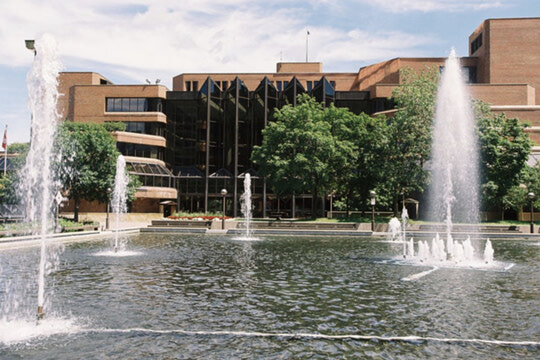ER wait times at Pontiac Hospital worsen amid regional demand and bed shortages
Tashi Farmilo
Wait times at Pontiac Community Hospital’s emergency room have increased significantly over the past year, making it the only hospital in the Outaouais region to see a decline in its overall emergency care performance.
According to data provided by the CISSS de l’Outaouais, the average stretcher wait time in Pontiac rose to 17 hours in 2024–2025, compared to just 7 hours the previous year. The proportion of patients remaining on stretchers for more than 48 hours also increased sharply, rising from 1.5% to 6.2%.
This trend stands in contrast to improvements reported in other hospitals across the region. Facilities in Hull, Gatineau, Wakefield, and Papineau saw modest gains, including reduced stretcher wait times and improved scores in emergency performance assessments. The Pontiac hospital’s overall rating dropped from B– to C.
A number of factors have contributed to longer delays at the Shawville facility. The number of users at the Pontiac ER has grown steadily, nearly doubling in five years — from 527 in 2020–2021 to 935 in 2024–2025. While some of that increase reflects local need, part of the demand is coming from residents of urban centres like Gatineau, where emergency rooms remain more congested. According to the CISSS, patients are sometimes seeking care in rural hospitals like Pontiac to avoid longer waits closer to home.
Bed availability is another ongoing concern. Of the 33 active care beds at Pontiac Community Hospital, 14 are currently occupied by patients who are waiting to be transferred to other levels of care. This shortage of available beds creates a backlog in the emergency room, as new patients cannot be admitted until others are moved.
The region’s aging population adds to the pressure. Older patients often require more complex and longer-term care, which contributes to increased use of emergency services and longer hospital stays. At the same time, the supply of long-term care placements remains limited, with not enough spaces in seniors’ residences or intermediate care facilities to meet the growing demand.
The CISSS de l’Outaouais stated that efforts are ongoing to improve patient flow and reduce pressure on emergency rooms. These include tools for monitoring hospital stays and initiatives focused on early discharge planning.
Meanwhile, outpatient visits across all six hospitals in the region rose by approximately six percent in the past year, reaching more than 103,000 in total. Despite the higher volume, four of the six hospitals improved their emergency department performance, which the CISSS attributed to the work of local care teams and system-wide efforts.
Pontiac MNA André Fortin expressed concern about the growing gap in care between rural and urban communities. He pointed to factors like staffing shortages and insufficient access to clinics as reasons more patients are being pushed into emergency departments. He also reiterated his call for increased health funding in the region and salary parity with Ontario to help recruit and retain healthcare professionals.
As the region moves into the summer months — typically a time of increased emergency room use — Pontiac Community Hospital continues to face pressure on a system already struggling with limited capacity and rising demand.





